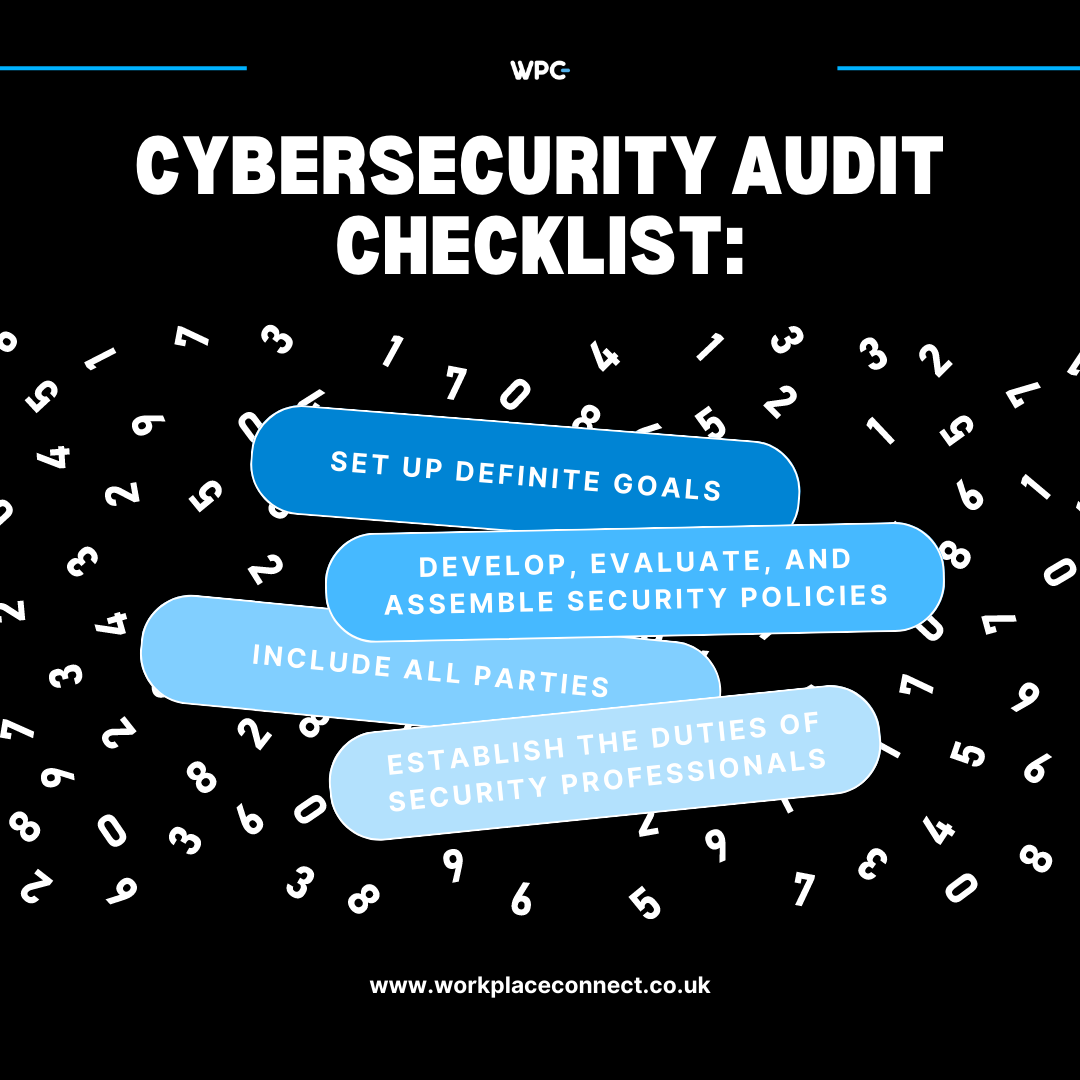Newer risks to security are constantly appearing, and as a result, legal requirements are constantly changing to handle them in the modern cybersecurity landscape. As a result, dealing with persistent threats is frequently seen as one of an organisation’s most time-consuming jobs. Essentially, this begins with the cybersecurity team of an organisation being entrusted with evaluating the efficacy of current security controls against growing external and insider threats. Cybersecurity audits evaluate the security posture of a business system, taking into account the security risk levels, compliance standards compliance, and the efficacy of cybersecurity policies against possible attacks.
This article covers the fundamentals of a complete security audit process, audit types, and best practises for continuous auditing.
What is a Cybersecurity Audit?
A cybersecurity audit offers a thorough analysis of information systems to gauge compliance and spot implementation gaps in security policies. To make sure that the firm’s digital assets and security measures meet compliance standards requirements, the auditing process entails a comprehensive examination of both. A thorough audit includes mitigation measures to reduce cyber risks along with insights into current security flaws.
An efficient audit plan assesses five fundamental security factors:
- Operations – Covers the cybersecurity policies, security procedures, and controls of the operational framework. Operational security comprises offering thorough safeguards on the administrative, functional, and procedural operations of diverse infrastructure assets.
- Network Security – Evaluation of the security posture of network assets and other systems accessible over the internet. A comprehensive network security audit examines infrastructure security, device access control, network availability, and overall asset performance.
- Data – Consists of the tools and security procedures used to safeguard the privacy, accuracy, and integrity of data within a business network. To safeguard crucial corporate data while it is in transit and at rest, security practises, authentication & authorisation rules, and TLS encryption are usually utilised.
- System – Refers to the degree of security implemented in hardware components, operating systems, and other important network infrastructure. System security audits look at the supervision of elevated rights, device access control, and patching.
- Physical Security – Measures used to prevent access to application data, software, and physical assets, as well as controls put in place to do so. Physical security measures shield employees working for an organisation from potential dangers that could lead to data loss or system compromise. Physical security is evaluated from many angles by thorough cyber security audits, including surveillance techniques, access restrictions, and physical disc backups.
Benefits of Cybersecurity Audits
A good cybersecurity audit programme aids in assessing and enhancing the security of corporate networks, systems, linked devices, and underlying data. The advantages of doing a thorough audit procedures are:
Aids in identifying weaknesses in security
Security professionals examine business systems during a cybersecurity audit to look for potential hazards that could result in breaches and operational interruptions. As part of the auditing process, the entire corporate network is constantly monitored for vulnerabilities that could be used in an attack. Security analysts can establish risk management plans and improve an existing cybersecurity strategy by exposing vulnerabilities and high-risk policies.
Meeting compliance requirements
Security compliance frameworks and governance organisations provide guidance for all enterprise systems that process information. Their frameworks define compliance audits as a legal duty, lowering the danger of legal action for the business. Compliance audits check to see if the organisation complies with the standards set forth in these frameworks.
Enforces business continuity
A thorough cybersecurity audit aids in locating security holes that can be used to plan attacks and record potential countermeasures. The administration of proper security methods for reclaiming control of crucial infrastructure that has already been penetrated by criminal actors depends on audit analytics, which is used by security experts and operators. To guarantee that corporate systems are accessible in the event of a security compromise, a security audit comprises backup and disaster recovery strategies. Even during an active attack, the procedure guarantees little business disruption.
Increases reputational value
Cybersecurity problems hurt a company’s brand because customers won’t trust them if they can’t secure their digital assets. Attackers who get access to user accounts or organisational data can access sensitive data and vital infrastructure, which can result in data breaches, the availability of applications, and intellectual property theft. Organisations can proactively detect and tackle cybersecurity issues in the company network through routine audits, gaining the public’s trust. Compliance audits assess the company’s compliance with security standards and legal obligations, as well as its performance relative to competitors.
Increases corporate education and cyber security awareness
A list of the hardware and software assets of the company is part of a thorough audit. Everybody can visualise the security hazards to the organisation thanks to the inventory, which includes a record of the security posture and possible dangers of all components utilised within the corporate network. Additionally, audits give security professionals the resources and information they need to strengthen the organisation’s cybersecurity framework. The audit procedure also gives the cybersecurity team a comprehensive view of the company’s IT architecture and a comprehensive look at business processes, enabling them to optimise security measures for protecting business systems.
Types of Audits in Cybersecurity
Internal Auditing
Internal audits are conducted by the internal team to assess the network’s internal policies, controls, and cybersecurity procedures. A strong internal audit foundation aids in evaluating current and necessary security measures and helps the cybersecurity audit team comprehend implementation problems in security.
Internal auditing has several advantages, including:
- Affordable security assessment
- Provides more flexibility for the auditing process
- It can be altered to fit existing security systems
External Auditing
An enterprise network’s security controls, compliance with regulations, and security holes are examined by outside security experts during an external audit. External auditors make sure the auditing process satisfies the organisation’s goals by assisting in the defence against constantly evolving threats because they are highly trained and qualified in finding weaknesses, private information, and network assets.
The following advantages of external auditing:
- It is more effective because it is carried out by trained security professionals who are unbiased and experienced.
- Ensures strict adherence to legal and compliance requirements
Best Practises for Audit Foundation
An effective cybersecurity audit provides recommendations for controlling security risks while assisting in the security of IT assets. Here are some practises to follow to guarantee efficient audit procedures:
Set up definite goals
The group consisting of auditors and security personnel should begin by establishing the audit’s parameters. This makes sure that the audit goals and the business goals they are intended to serve can be identified clearly. Cross-functional teams may administer the audit process with ease and without affecting the performance and accessibility of business systems thanks to clearly stated objectives and goals.
Include all parties
The cybersecurity programme and how it affects company operations should be known to every security staff member, developer, and non-technical employee. The current cybersecurity rules and their roles in upholding the organisation’s security posture should also be modified for all concerned business divisions and external vendors. It is simpler to conveniently arrange all of the assets required to complete the audit when every stakeholder is aware of their part in it.
Develop, evaluate, and assemble security policies
The business systems of an organisation are controlled by security rules in terms of how data is handled, stored, and transported. The audit team’s ability to assess how valuable digital assets are and what precautions are necessary to secure them is made possible by the creation of security policies. The safety procedures should be centrally located and searchable to simplify the auditing process and provide auditors with a comprehensive view of the network’s security posture without requiring them to navigate complicated workflows.
Research pertinent security frameworks
Different compliance rules for each industry regulate how sensitive user data is handled and stored. To apply only pertinent data protection rules, security specialists should ascertain the pertinent compliance framework that covers a certain industry or department. The audit team should detail the safety precautions that have been implemented to meet the particular demands for each recognised framework.
Establish the duties of security professionals
In order to assess how well network access management, underlying assets, and information are safeguarded, the auditing team should create a questionnaire for the cyber security team and other data administrators. Organisations should also keep a list of security professionals on hand as well as a matrix of escalation to be used in the case of a security issue in order to ensure that the auditing process runs smoothly.
List the network assets
To help auditors comprehend the network architecture, organisations should give them a thorough catalogue of the network topology and an updated network diagram. It is simple to identify each digital asset, evaluate security posture, and take steps to remedy in the event of a breach by including logical and physical schematics with component IDs like ports, domains, mobile phones, and other network objects.
How Frequently Should Security Teams Do Audits?
Regular audits aid in the implementation of a strong security posture in a cybersecurity audit process, which offers a proactive method of security risk management. Guidelines on how frequently audits should be conducted to satisfy regulatory obligations are included in each compliance framework. When preparing the audit schedule, cybersecurity audit teams should review these recommendations.
Internal audits should be conducted on a weekly or monthly basis as a recommended practise to guarantee that the security team frequently evaluates the efficacy of their security measures against new threats and vulnerabilities. On the other hand, since they frequently disrupt working routines, external audits should be carried out quarterly or yearly.
What Distinguishes Penetration Tests From Cybersecurity Audits?
Testing diverse digital assets for thorough risk assessments and spotting potential holes are both parts of a cybersecurity audit. By attempting to plan an attack much as a malicious actor would, penetration testing provides a more thorough cybersecurity review of internal systems than audit findings. A security analyst does this while simulating various hacker attack tactics to see if current security measures can thwart an attack.
How Can You Use The Findings of an Audit?
A prioritised list of security concerns and various actions that can be taken to raise network security is provided by routine cybersecurity audits. The following security solutions use audits as input:
- Security workshop sessions
- Updates and patches for software
- Solutions for network monitoring
- Locations for backup and recovery
Final Thoughts
A carefully carried out security audit aids in meeting legal, regulatory, and compliance obligations while assisting in the management of cyber risk. Vulnerability scanning is sometimes seen as the first step in auditing and compliance since it immediately detects security gaps in enterprise business systems, supporting the argument made above.
Workplace Connect provides vulnerability scanners so that your business can adhere to legal cybersecurity requirements. Contact us right away to learn more about how we can help you!







